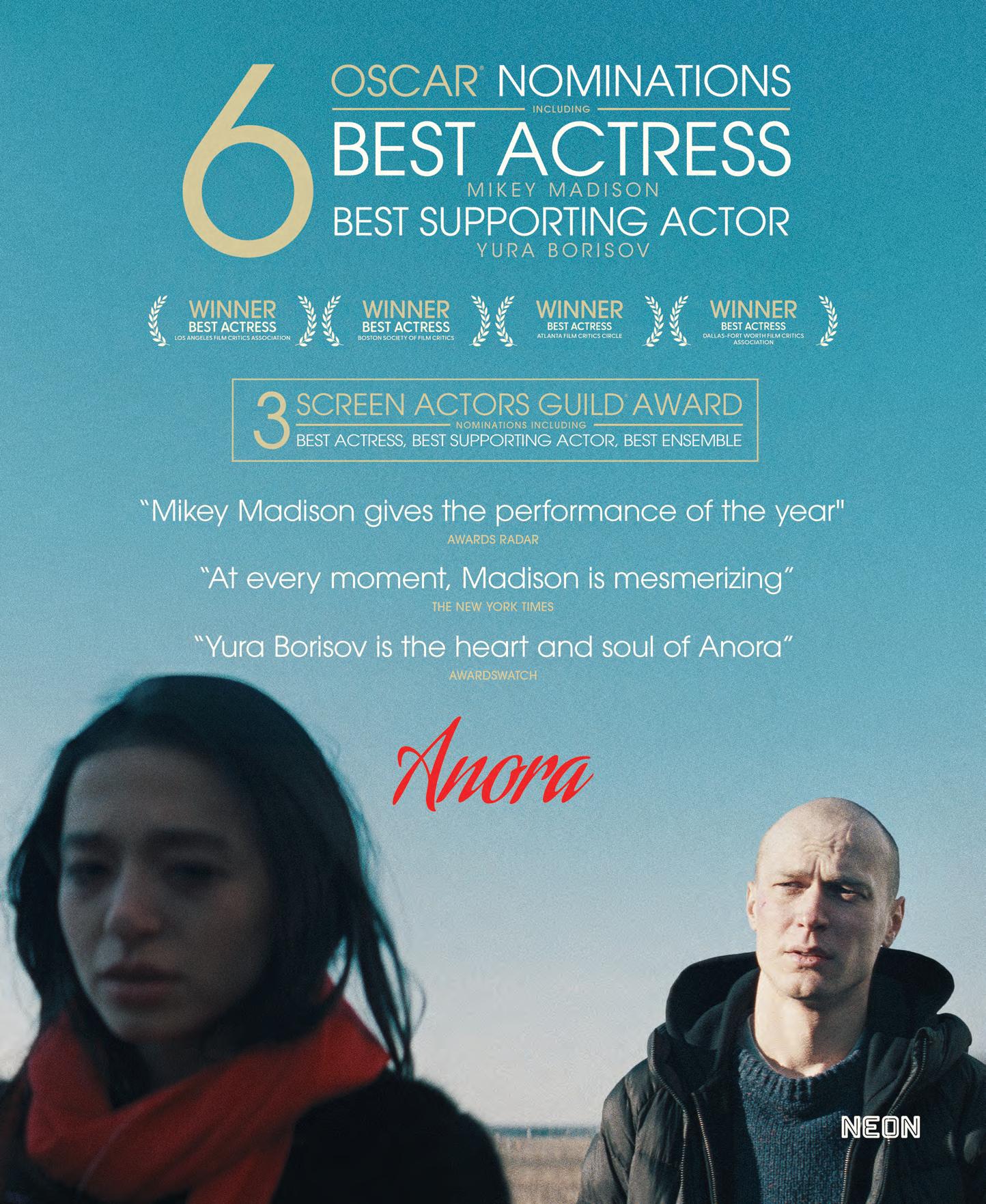


CYNTHIAERIVO HIAE


“THE SCREEN HASR ARELYSEEN– OR HEARD– AR

























CYNTHIAERIVO HIAE


“THE SCREEN HASR ARELYSEEN– OR HEARD– AR











































LIKE THOSEDELIVERED BY CYNTHIAERIVO ANDARIANAGRANDE.” CY HIAE
®
NO MINAT IO NS AT
OUTSTANDINGPERFORM ANCE BY A BYA
FEMALE actorINA LEADINGROLE LEAD GROLE
CYNTHIA ERIVO HIA
OUTSTANDINGPERFORM ANCE BY A TAND ERFORM BYA
FEMALE actoRINA supporting ROLE ac pporting
ARIANA GRANDE
OUTSTANDINGPERFORM ANCE BY A BYA MALE actorINA supporting ROLE
JONATHAN BAILEY
OUTSTANDINGPERFORM ANCE BY A BYA cast IN Amotionpicture
JONATHAN BAILEY •MARISSA BODE •PETER DINKLAGE •PETERDINKLAGE
CYNTHIA ERIVO •JEFF GOLDBLUM •ARIANA GRANDE ER •A ETHAN SLATER •BOWEN YANG •MICHELLE YEOH
OUTSTANDINGACTIONPERFORM ANCE BY A BYA Stunt Ensemble IN AMotionPicture unt AMot tur



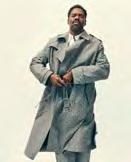
Cover photo by Shayan Asgharnia For The Times
The Envelope speaks with composer Daniel Blumberg (p 14) about lugging recording equipment across Europe to collaborate with worldclass musicians on the original score for director Brady Corbet’s sweeping film “The Brutalist.”
COVER STORY
“Sing Sing” actor Colman Domingo on the challenge of honoring the stories of formerly incarcerated men, the power of art to heal and why Shakespeare’s words still resonate with him today. p 16
A Deeper Dive (p 26) looks back on the classic acting performances that were surprisingly overlooked by the Oscars. How Nathan Crowley (p 30) brought some realism to the fantasy land of Oz through the magic of practical effects.
Both “Wicked” and “Dune: Part Two” exceed the 2 ½hour mark yet have managed to earn hundreds of millions in boxoffice returns and score best picture nods. But they’re still a far cry from the success of past lengthy films (p 42).
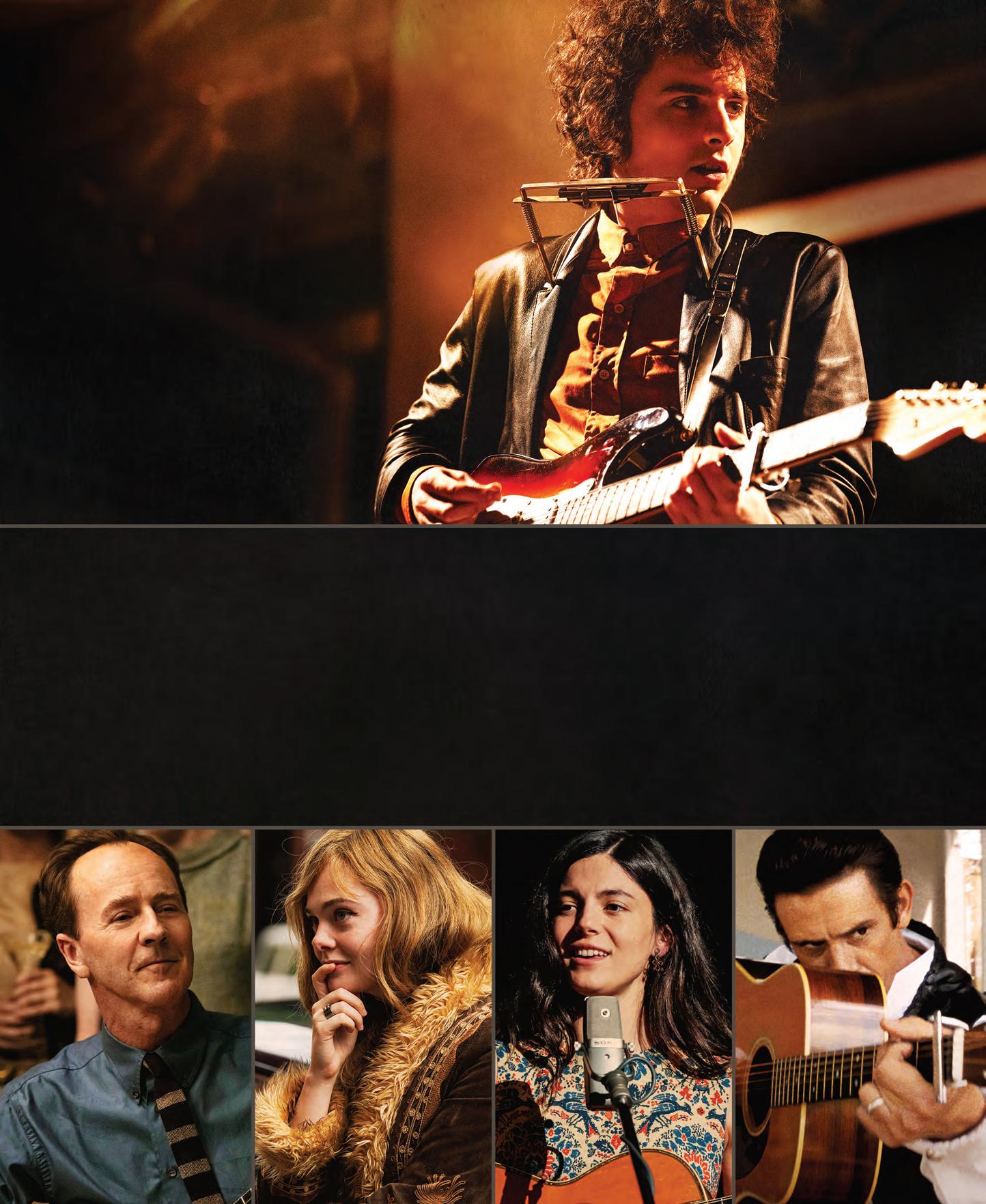
2025
Scan to connect with The Envelope on Instagram.
EDITOR IN CHIEF
ELENA NELSON HOWE
EDITORIAL
Assistant Editor
DIANE GARRETT
Columnist
GLENN WHIPP
Writers
LORRAINE ALI
STEPHEN BATTAGLIO AMY KAUFMAN
SAMANTHA MASUNAGA
MARK OLSEN YVONNE VILLARREAL
COPY
Copy Chief LISA HOROWITZ
Copy Editor JASON SANCHEZ
DESIGN
Senior Deputy Design Director FAITH STAFFORD
Senior Art Director LESLEY BUSBY
Art Directors
GLORIA ORBEGOZO
JUDY PRYOR
SUSANA SANCHEZ JAMIE SHOLBERG
PHOTO
Photo Editor JEROME ADAMSTEIN
Photographers JASON ARMOND ROBERT GAUTHIER CHRISTINA HOUSE ALLEN J. SCHABEN MARCUS UBUNGEN
L.A. TIMES STUDIOS PRESIDENT ANNA MAGZANYAN
ADVERTISING SALES
Vice President of Sales, Entertainment & Sports HEIDI LINNEBACH
Vice President of Sales, Professional Services & Classified HELYA ASKARI
Vice President of Sales, East Coast National, Fashion & Branded Content KRISTEN BERKE
Vice President of Sales, West Coast National & Events ERIC MA
Senior Sales Executives JESSE BONNER KRISTIN SANTOSUOSSO BETH ZELMAN
Managing Director, Digital CAMILLE MURPHY
Director, Sales Strategy RATTANA EPLEY
Sales Coordinator MELANIE CULLEN
ADVERTISER MARKETING
Executive Vice President,
Client Solutions MIKE KECHICHIAN
Marketing Director DAVE PURDUE
Project Manager HELEN CHANG
Advertorial Copywriter DAVID CHEE
Content Strategist ALAN LAGUARDIA
Analyst ARMAN GEVORKYAN
Designer MATTHEW FRANCO
Analyst SARAH MEASE
STUDIOS
Producer KEVIN HAULIHAN
Studio Administration DENISE CALLAHAN
AUDIENCE ENGAGEMENT Assistant Editor, Audience Engagement VANESSA FRANKO
Audience Engagement Editors NICHOLAS DUCASSI DAVID VIRAMONTES
EDITION PLANNING AND OPERATIONS JULIE BYER JAVIER CHAVEZ RUDY FLORES ELIZABETH GHRERJONES NEIL MCANALLY DAVE NOVOTNEY KATRINA TEN
THE ENVELOPE ROUNDTABLE VIDEOS
Producer
KEVIN HAULIHAN
Hosts
LORRAINE ALI RYAN FAUGHNDER AMY KAUFMAN MARK OLSEN YVONNE VILLARREAL
Editors
MICHAEL RAY ANDY VINER
Studio Administration DENISE CALLAHAN
THE ENVELOPE VIDEO PODCAST Deputy Entertainment Editor and Producer MATT BRENNAN
Production MARK E. POTTS JASON NEUBERT
PARTNERSHIPS Executive Director, Partnerships KATIE FILLINGAME
CONSUMER MARKETING AND CREATIVE SERVICES Executive Vice President, Consumer Marketing PRIYA GIRISHANKAR
Executive Director, Growth Marketing TRAVIS BERNARD
Creative Director BRANDON SIDES
Media Director BECCA DORMAN
Project Management, Creative Services PATRICIA GARDINER
EVENTS Vice President JORDAN HARRIS
Events Director KIM BUENO
Events Manager STRYKER MATTHEWS
Events Specialist NICOLE FLORES
ADVERTISING OPERATIONS Vice President JESSICA HOFFMAN
Client Services and Systems Advertising Director MELINDA MARQUEZ
Client Services and Systems Advertising Director SANDRA CARLOS
Executive Editor TERRY TANG Creative Director & Deputy Managing Editor AMY KING Assistant Managing Editor, Entertainment CRAIG NAKANO Executive Director of Photography KIM CHAPIN

Performers February 4, 2025
Our Oscar experts share their picks

International Feature
“Emilia Pérez” (France)
“I’m Still Here” (Brazil)
“The Seed of the Sacred Fig” (Germany)
“Flow” (Latvia)
“The Girl With the Needle” (Denmark)
FRANCE’S “EMILIA PÉREZ” REMAINS THE BUZZMETER PANEL’S CONSENSUS PICK ATOP THE INTERNATIONAL field, but with two other nominees also receiving major Oscar recognition, this no longer looks like the runaway race it once did. Brazil’s “I’m Still Here” joins the French frontrunner as a double nominee — with nods in both the international category and as best picture. And Latvia’s “Flow” doubles up its international nomination with a nod in the animated feature category as well. Still, “Emilia Pérez” led all comers with 13 nominations, so the unique story of a drug kingpin is still expected to triumph: “Its historic overall performance means it’ll likely become the first musical winner in this category since 1959,” says panelist Dave Karger.

You can find all our picks at latimes.com/ buzzmeter
GLENN WHIPP Los Angeles Times

Both “Emilia Pérez” and “I’m Still Here” picked up nominations for best picture as well, the first time two movies have shared that distinction in the same year. It’s hard to pick against “Emilia Pérez,” though, as it pulled in a leading 13 nods.
ANNE THOMPSON IndieWire
“Emilia Pérez” should win both supporting actress (Zoe Saldaña) and international feature film. But it’s unusual to see two international films landing best picture nominations, so Walter Salles’ “I’m Still Here” could prove a category spoiler.

AMY NICHOLSON Los Angeles Times
It’s possible 13 nominations will prove an unlucky number for “Emilia Pérez.” Yes, it’s the diva with the most nods. But a win here could mean voters feel they’ve given it enough flowers and it will end the night singing a tragic aria.

DAVE KARGER Turner Classic Movies
The inclusion of “I’m Still Here” in the best picture lineup means this isn’t as much of a lock for “Emilia Pérez” as originally thought.But its historic overall performance means it’ll likely become the first musical winner in this category since 1959.

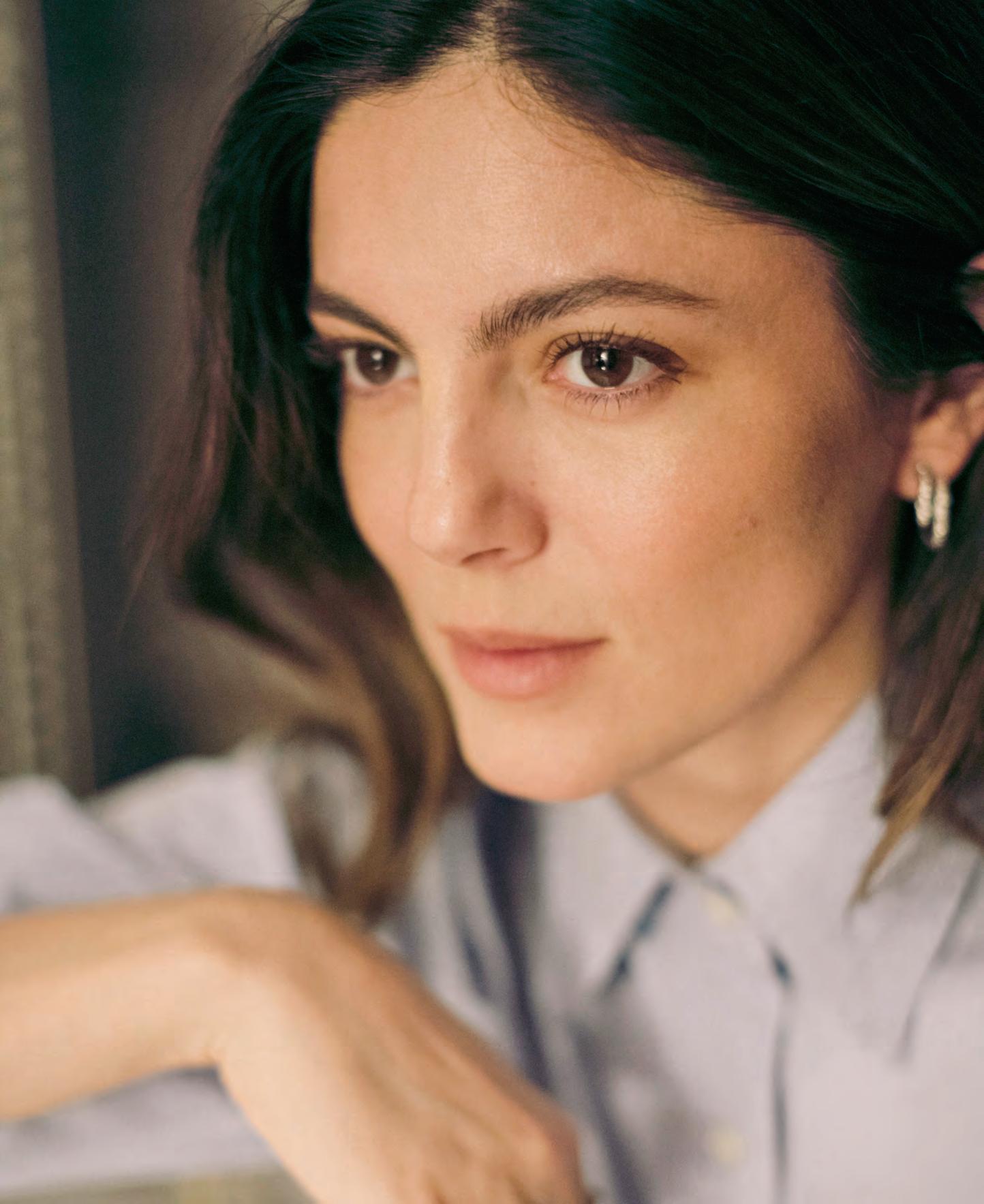


Anew podcastfromaward-winning Times columnistSammyRoth.

Toughquestions. Realisticsolutions. Essentialclimateconversations. Listennow.

Story by Jordan Riefe
The actor understands why Joan Baez the voice and Bob Dylan the poet were a seemingly perfect match
JPhotograph by Jennifer McCord
For The Times
corner on his bed, noodling [on] the guitar, being kind of a d—. But for me, the one thing I wanted to make sure to have was the impact of his writing on her.”
Dylan and Baez were romantically linked until his 1965 U.K. tour (which is not in “A Complete Unknown” but is immortalized in D.A. Pennebaker’s documentary “Don’t Look Back”). Accompanying him months later at the Newport Folk Festival, where he went electric (the new movie’s climax), Baez flips him the bird.
↓ Joan Baez (Monica Barbaro) and Bob Dylan (Timothée Chalamet) in “A Complete Unknown.”
OAN IS YOURS.” THAT’S WHAT the email from director James Mangold to Monica Barbaro said. The actor had sent in her audition tape for the role of folk legend Joan Baez in “A Complete Unknown,” the story of Bob Dylan’s arrival on the folk scene. After learning that she’d made the shortlist, Barbaro was to meet with Mangold in March 2020, but it wasn’t until after the pandemic, in 2023, that they finally did.
The good news? She’d got the part. The bad news? Well, she got the part. Now that she had it, she had to learn to play the guitar and sing … in a voice a few octaves higher than her usual.
“Every conversation about Joan’s voice, you hear about her vibrato, the key she sings in and the angelic quality. It was about getting those things so it was recognizable,” recalls Barbaro, a supporting actress Oscar nominee — one of the film’s eight nods, including best picture. “I leaned into getting as close to her as possible. And on the day, you put the preparation on the shelf and receive the person in front of you in a real authentic moment.”
Barbaro didn’t meet with 84yearold
Baez but did get some phone time with her and found her to be kind and forthright. “It’s about authenticity. Joan was very approachable in the research. She reveals so much about herself. I didn’t have to cut through a lot of selfcongratulatory B.S. to find what makes her tick.”
Dylan was still establishing himself in the Greenwich Village folk scene when he met Baez, by then a star. “She had a very complicated relationship with fame in that it didn’t really sit right with her,” notes Barbaro. “I think it bumped against her values, and she was looking for lyrics that were saying something so she could put this platform she had into doing some good.”
Dylan’s talent as a songwriter was immediately apparent to Baez, and before long they fell into each other’s arms, despite his longtime relationship with Suze Rotolo, represented in the film by fictional character Sylvie Russo (Elle Fanning). In a pivotal scene, Baez wakes up next to Dylan (Timothée Chalamet) after their first night together. She harmonizes while he sketches out a new song called “Blowin’ in the Wind.”
“There are so many components to that scene; it’s multiple pagestoo. We shot that for 14 hours,” Barbaro says with a sigh about filming in temperatures sometimes topping 100 degrees under the lights. It was her final scene on the film and the most intimate.
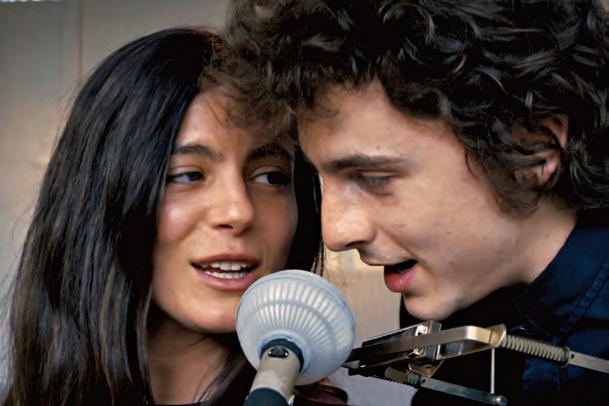
“It has to be so raw, first thing in the morning, finding your voice and finding each other’s voice. She’s seeing the words for the first time, but she’s also a talented musician and knows how to pick up the melody and harmonize and play. He’s in the
“She fell in love with the poet, the person willing to say what he was willing to say. I think she fell in love with the words themselves and how he was saying things she was trying to find the words for,” says Barbaro about the doomed relationship. “She talked about how there was a motherchild dynamic between themtoo. And they were so young. If I try to unpack my relationships at 20 ... I can’t imagine that being inspected on a public level for decades to come.”
Originally from San Francisco, Barbaro grew up in the Bay Area suburb of Mill Valley, where she began dancing at an early age and went on to study ballet. Graduating NYU’s Tisch School of the Arts in 2010, she decided to pursue acting, finding work on such shows as Lifetime’s “UnREAL” and NBC’s “Chicago Justice,” and eventually landing the role of Lt. Natasha “Phoenix” Trace in “Top Gun: Maverick” alongside Tom Cruise. “My experience with Timothée and Tom is that they work tirelessly at being good at what their characters are good at,” she says, comparing her two leading actors. “It’s an allconsuming profession because you have to learn skills in a matter of months as if you’ve been doing them for decades.”
A few weeks ago, Barbaro learned of a thing called an Oscar shortlist. A few days later, she learned she was on it. “I was midfitting for another project,” she recalls of the day of the nominations. “My publicist asked if I’d be available to talk at the time. I’m not going to change around my day and sit by my phone. I was going to play it cool. The next thing I knew, my phone was blowing up with congratulations. It’s mindblowing. Sometimes people will say, ‘Academy Award nominee Monica Barbaro,’ and it stops me, whoa!” Dylan and Baez sang about the issues of their time — social justice, war, racism — issues that persist today. “It was only 60 years ago. Human evolution takes time,” says Barbaro, wondering if in some ways the times, they aren’t a changin’. “I like to be optimistic, but some days, politically speaking, my optimism is through the floor. The coolest thing about this film is getting to see audiences who lived then and [see them] feel like their time was understood.” S


Daniel Blumberg traversed Europe to build ‘The Brutalist’s’ epic sound
THE SCORE FOR “THE Brutalist” is itself a feat of architectural engineering.
Composing only his second feature film, Daniel Blumberg gathered solos, performances and improvisations from instrumentalists all over Europe — from the garden studio of an octogenarian pianist on the southern coast of England, to a posh studio in Paris, to musicians’ flats and kitchens in Berlin and elsewhere — and assembled them into an imposing cathedral of sound that matches the scale of Brady Corbet’s VistaVision epic.
Tracking Adrien Brody’s Hungarian architect (the fictional László Tóth) from his arrival at Ellis Island sometime after World War II, Blumberg’s score asserts itself immediately with the musical thrum of construction — achieved with a hammerlike rhythm on prepared piano — and the churning, chaotic sound of industry by way of a warmly masculine brass anthem and all kinds of clacks, saws and snarls from his ragtag “orchestra.”
“Brady always talked about this collage aspect,” says Blumberg, referring to the film’s mix of 35mm and digital formats with archival footage. The musician’s own instincts already leaned that way, and when he started thinking about the score, “It’s not like, ‘Oh, I want the trumpet on this.’ It’s like, ‘Axel Dörner would be perfect for this,’” he says of the trumpet master he recorded in Berlin.
The composer assembled a dream team of musicians, many of whom were already friends or mutual friends — or, in the case of 88yearold John Tilbury, a longtime hero. Blumberg took his portable recording equipment to them partly out of necessity; Tilbury doesn’t travel, and Sophie Agnel, another accomplished pianist, had restrictions on her busy schedule. But this also led to more freeform experimentation, allowing the musicians to really express themselves.
And even the space itself became part of the music. It was pouring rain one day on the roof of Tilbury’s kitchen shed, which caused Blumberg to worry. The pianist said: “I can do a duo with the rain.” Blumberg said: “I know — I’ve got your record where you do a duo with the dust.” “But in the end,” Blumberg says, “it was just beautiful, and we used it.”
(That “duo” is best heard in the scene where Tóth and his crew build a library for Guy Pearce’s character, Harrison Lee Van Buren.)
Blumberg is a somewhat shy, 34yearold singer and multiinstrumentalist from London who, for the last two decades, has recorded albums in various bands and as a solo artist, and whose only clear throughline is raw emotion and sonic experimen
tation. He met the American Corbet 10 years ago when the former actor was working on his directorial debut, “The Childhood of a Leader.” They hit it off instantly — Corbet stayed on Blumberg’s sofa the first night they met — and every time Blumberg finished a new record, he would discuss it with Corbet.
Even before scoring his first film, “The World to Come,” in 2020 (directed by Mona Fastvold, Corbet’s partner), Blumberg was expecting to score Corbet’s ambitious throwback opus. They began discussing it years ago in its initial preproduction stage before the pandemic, when the project was temporarily scuttled and recast. The score was under construction before and alongside the picture, and Corbet always said he wanted to shoot some of his movie to the music.
The piece that underscores Tóth’s chaoticopening moments, from below deck of a ship to his sight of an upsidedown Statue of Liberty, was actually a demo that Blumberg made in his London flat. Corbet amplified the track on set, and cinematographer Lol Crawley was “kind of moving with the music,” explains Blumberg, “and
“I’M ALWAYS JUST SORT OF BASHING AWAY, TRYING TO FIND CHORDS.”
Daniel Blumberg
↓ Actors Guy Pearce, left, Adrien Brody and Isaach de Bankolé in “The Brutalist.”
the choreography of Adrien and the extras. They were all moving like akind of dance.”(Blumberg later improved the track with his virtuoso musicians.)
The sound of searching was baked into the score. Blumberg doesn’t read or write music, so “I’m always just sort of bashing away, trying to find chords,” he says. “Brady heard me in my room doing that, and he came in and he was like, ‘I mean, that’s literally the sound of someone working something out. That’s what we want to try and retain.’”
“A lot of the temp was done to these kind of weird recordings,” Blumberg says with a laugh, “where I’m, like, dropping my vape on the floor.”
To retain that spirit, he put a microphone on Tilbury himself, to capture the sound of the pianist adjusting in his chair or breathing; if you listen closely during the film’s intermission, you can actually hear Tilbury scribbling on his sheet music.
Both the film and its score achieved remarkable scope and weight out of relatively thin resources — there are no strings on the score — but perhaps the greatest length Blumberg went to was traveling to Carrara, Italy, where the scenes in its famous marble quarry had already been shot. He recorded the quarry’s unique impulse response (achieved by firing a gun), then applied that reverb onto a recording of his saxophone player, Evan Parker, that had been made in an office in Kent, England.
“We put Kent in Carrara,” says Blumberg — aptly summarizing his strange and towering achievement.
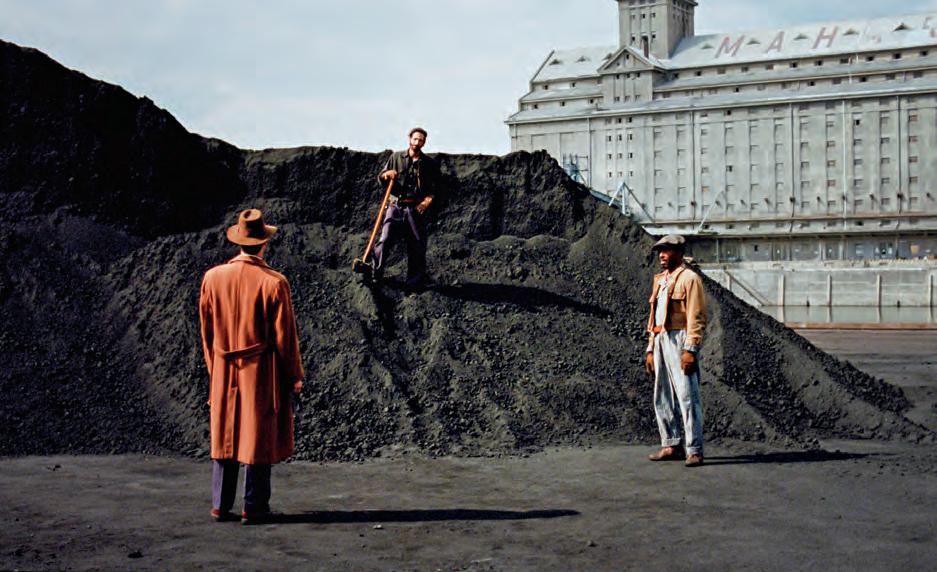
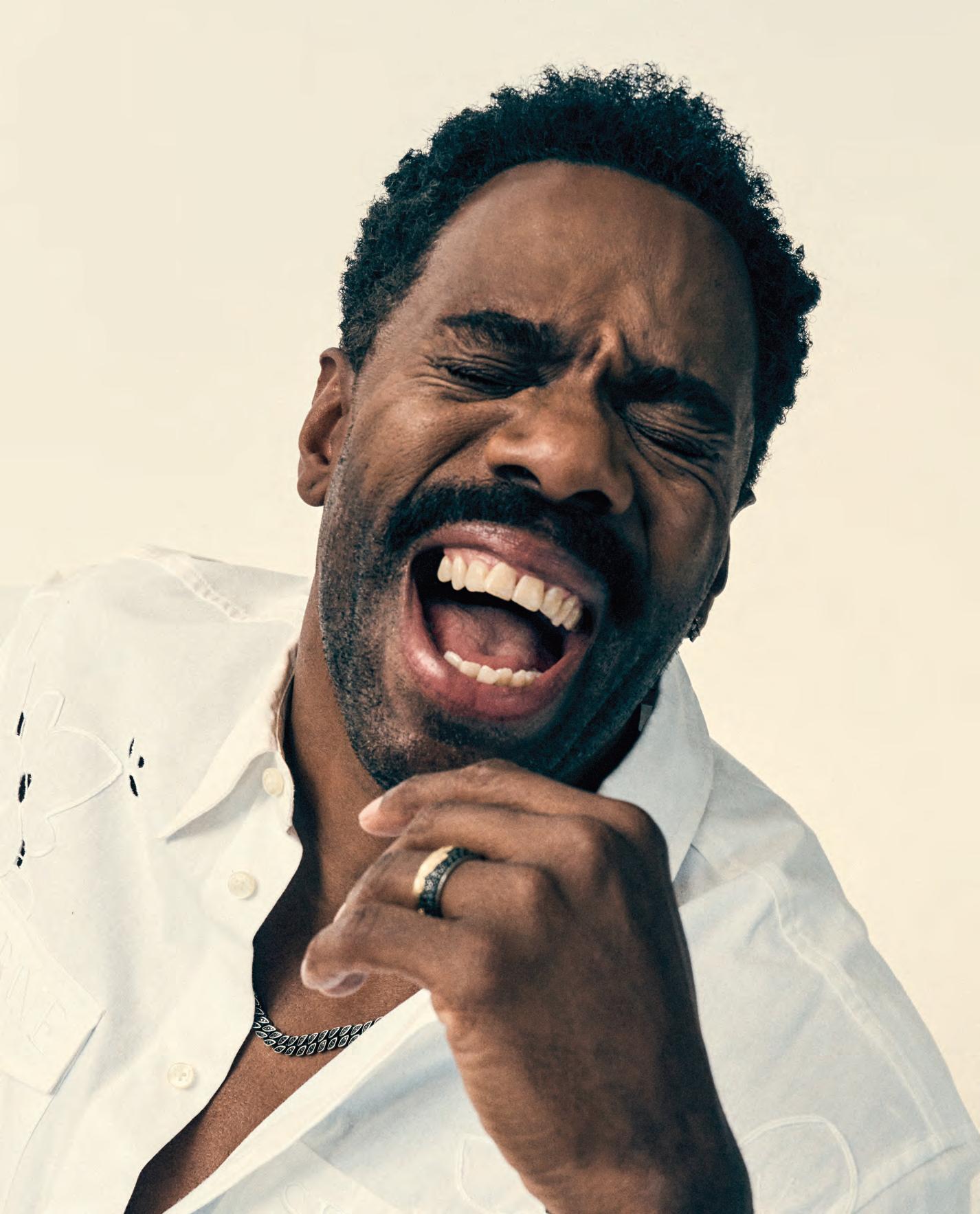
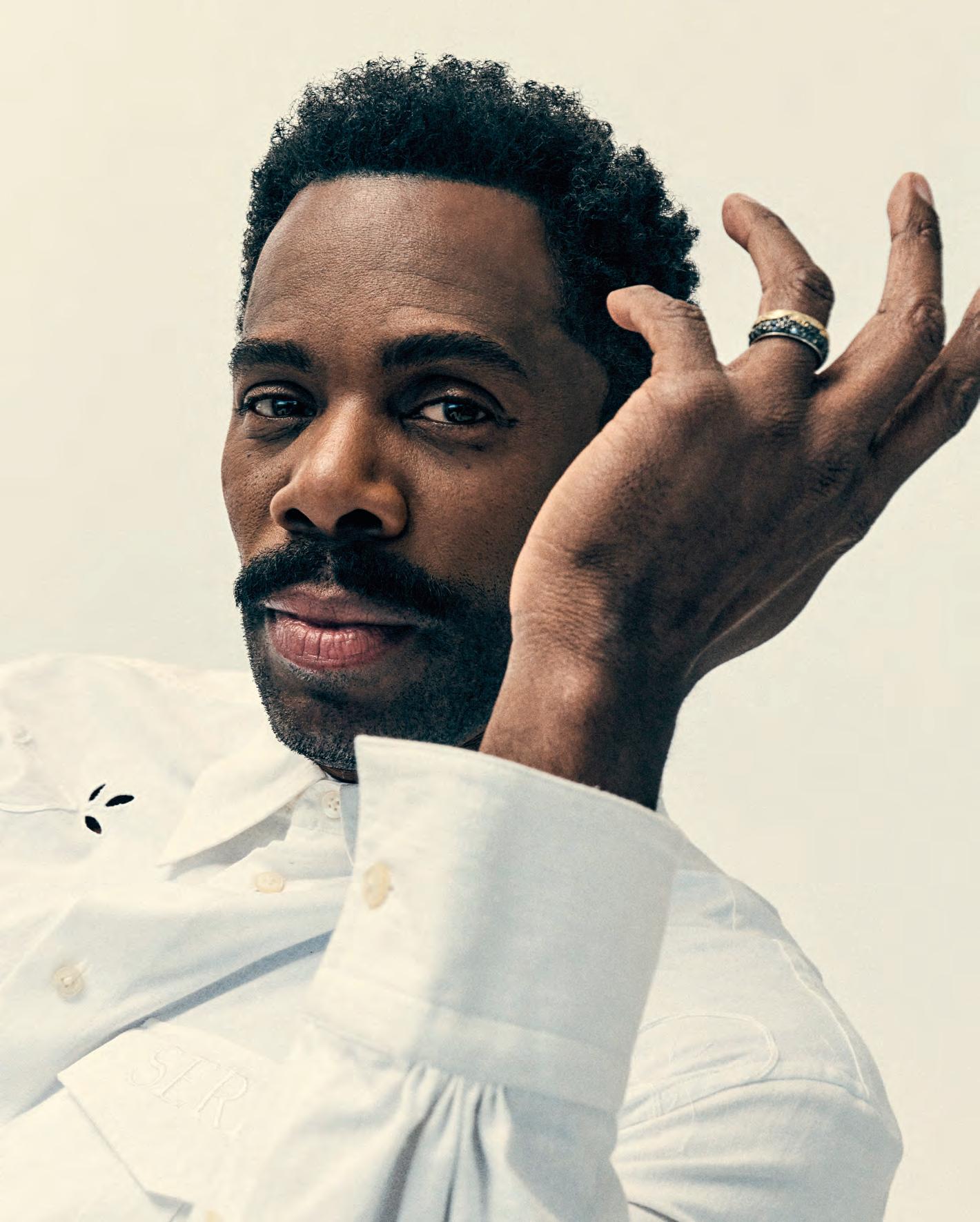



Oscar nominations were announced. He was jetlagged, having just returned to L.A. from Europe. He looked up at the moon and felt that, despite the darkness of the fires and the country’s crazy politics and everything else going on — no matter what happens — the moon was there, and he was blessed. ¶ Two hours later, he found out he’d been nominated for his soulbaring performance in “Sing Sing.” ¶ We met just a few hours later at the skyscraping offices of A24 in West Hollywood, where Domingo — 55, impeccably dressed, wide awake and in good humor — was waxing thoughtfully about the power of Shakespeare. ¶ “Shakespeare is someone who gives people confidence, I think, when it comes to language skills,” saysDomingo, a Philadelphia native who has been acting for 34 years and who has done his fair share of boardtreading with the Bard’s work. “I think why I’m not afraid of language in my work is because I’m rooted with a lot of Shakespeare. ... He’s giving you such great jumpingoff points to create whole worlds withlanguage.”
↙ Sean San Jose, right, stars with Domingo in “Sing Sing.”
He ponders it a little more, and adds: “I think Shakespeare would be a good buddy of mine. I think we’d have a couple beers together, and a good laugh.”
When I mention that I’ve always struggled with Shakespeare because it feels like a foreign language, Domingo launches into a fully committed and physical recitation, from memory, of a passage from “A Midsummer’s Night’s Dream” — about hopping fairies and blessing this palace with sweet peace.
“You understood that, didn’t you?” he says when he finishes, a twinkle in his eye, and it’s suddenly clear just how much of himself Domingo poured into his role in “Sing Sing.”
His character, John “Divine G” Whitfield, opens the film with another riveting speech from “Midsummer’s” — Lysander’s monologue about how “The course of true love never did run smooth” — which, the actor says, “tells you a lot about the character in the very first sentence.” Whitfield is a very real person, formerly incarcerated and the product of the
Rehabilitation Through the Arts (RTA) program at Sing Sing Correctional Facility in New York. In conceiving his performance, Domingo saw Divine G as “the best of that program and what it can be.”
“When I was examining his level of skill,” Domingo says, “I thought: ‘He’s just a very raw actor. Not polished.’ ... But imagine if that raw talent was polished — it could be useful outside of the walls. You know, he can actually make a career for himself. Which is what my costar, Clarence Maclin, is doing.”
Maclin, a.k.a. “Divine Eye,” plays a version of himself in the film, which he also cowrote. He is one of several former inmates and RTA alumni who play themselves alongside Domingo and a handful of professional actors, lending the whole production a powerful authenticity. It also forced Domingo — who had very little time to prepare to shoot the film in 18 days, between doing “The Color Purple” and reshoots on “Rustin” — to be more of his actual self than he’s ever been onscreen.
“I knew there needed to be sort of a
“NOTHING ABOUT IT IS BEING AN ACTIVIST OR POLITICAL IN ANY WAY. IF ANYTHING, IT’S THE ANTITHESIS OF THAT. IT’S VERY HUMAN.”
Colman Domingo on “Sing Sing”

sleightofhand,” he says. “But also, if I’m dealing with guys who had the real lived experience, and they’re bringing themselves and playing versions of themselves, to a certain extent I had to play a version of myself. I had to bring myself in every single way.”
For that reason, it’s hard for him to watch the film. He’s seen the movie only twice; once in a rough cut and then again on an airplane. “When I would start to watch it, something would come up in me,” Domingo says. “I’m like: ‘I’m too emotional, and I can’t watch.’ And I had never felt that way about anything I’ve watched of my own — because usually I’m building a character. I think I felt too exposed,” in “Sing Sing.”
In the film, Divine G is the de facto leader of a group of men who stage plays at the maximumsecurity prison. He’s a talented thespian who also writes plays; a gentle man, a mentor and a selfdescribed jailhouse lawyer who is preparing for his parole hearing. He recruits the much rougheredged Divine Eye to join the RTA program, and despite their very different temperaments and Divine Eye’s initial resistance to the vulnerability and unguarded emotions the program elicits, they become unlikely friends.
In one scene, Divine Eye calls Divine G the Nword, and Divine G says they don’t use that word inside the group — instead, they call each other “beloved.” This was, in fact, a lesson the real Divine Eye taught Domingo during one of their Zoom rehearsals, and Domingo insisted they work it into the script.
“He said it just so carefree,” Domingo says. “And I was like: ‘Grown, tough, strong men in prison call each other “beloved.” ’ ”It was said so casually, Domingo notes, and yet was so impactful.“I thought that was key.”
“Sing Sing” illustrates the profound power of acting and the arts to heal the cracked and hardened hearts and bodies of men locked behind bars. It does so without preaching or grandstanding, with the most gentle touch and feathery 35 mm cinematography by Pat Scola, who chose to use natural light and to focus on the “landscape” of these men’s faces as they alternate between parading in silly costumes and quietly visualizing their happiest memories.
“I think it has a grace to it,” says Domingo, “a grace and an intelligence and a tenderness. And nothing about it is being an activist or political in any way. If anything, it’s the antithesis of that. It’s very human so therefore it does become political, because you’re dealing with the people. So it takes care of that by just going more micro.”
Much of the film was shot in two real prisons — including Downstate Correctional Facility in upstate New York, which had just been decommissioned two weeks before the cast arrived.
“So every ounce of it was very real,” Domingo says. “The way the air did not flow. The cells. The colors. The layout of the land, where you can’t find your due north because it’s just set up that way. And you thought about what that does to you psychologically. And then you thought: ‘Well, this doesn’t feel like a place where anyone can heal or get better or contribute.’”
For Domingo, putting on prison greens (which he


↙ Domingo hugs Clarence Maclin, center, while filming “Sing Sing.”

“THERE’S A VOLCANO DEEP INSIDE, AND ALSO AN ABYSS. I THINK HE’S SOMEONE WHO HAS HUNG ON AND CLUNG TO FAITH AND HOPE IN ART.”
Domingo on his character, Divine G
wanted to be a little illfitting) was just another costume, but for his castmates it was a true act of courage to get back into clothes, and an environment, from which they hoped they had been permanently freed — “but I know that they knew the impact it could have, a film like this,” he says.
Still, even he needed a bigger emotional safety net to do this project, which is why he requested that Sharon Washington play the parole board officer and Sean San Jose his fellow inmate, Mike Mike. “Those are my two closest friends on the planet,” says Domingo, who has known San Jose since the mid’90s, when they were young actors together in San Francisco, bringing plays about the AIDS crisis to Bay Area students. He needed them, he says, because they “really held that space for me to be as vulnerable as possible,” he says. “They know my heart.”
There’s a pivotal scene, midway through the film, where Divine G comes to his parole hearing with a stack of envelopes and evidence, confident that a newly found re
cording will exonerate him from the murder that wrongly sent him to Sing Sing.
“He’s hopeful, and he’s open, and he’s also vulnerable,” Domingo says. “He’s all the things that the program has built him to be. There are trust exercises in the theater, so I think he’s being trusting that this person will meet him where he’s meeting them, with the truth. But he almost forgot, I think, that he’s up against the cynicism of the world.”
It takes just one question from Washington’s character — asking if his sincerity in the interview is actually a performance — “to just derail him, to take something that he’s been using as his soul work, and to question it,” he says. “It just dismantles him right there.”
Domingo didn’t plan how to act that scene, but running smack into the harsh reality of the system, the actor visibly deflates. “I tried to say something, but I had no words,” he explains. “Someone who always has something to say is rendered speechless.”
This heartbreaking moment, com
pounded by another tragedy, causes Divine G to lose hope, and he becomes very quiet and almost catatonic when he’s back in rehearsals for the upcoming play — “I think because there’s a volcano deep inside, and also an abyss,” Domingo says. “I think he’s someone who has hung on and clung to faith and hope in art. And his hands can’t cling anymore. So he just goes to zero.”
In that state, the slightest disturbance — someone in the program taking his props, someone forgetting their line — sets him off, and Divine G erupts.
“It gets me emotional to think about it,” says Domingo, “but it’s like, this man’s life has been ruined — and many other folks’too who’ve been wrongly incarcerated. And you feel like you’re just a plaything for life. And at some point, he’s like: ‘I can’t take it anymore.’ Even this gentle man will fall apart and get angry.”
After a shocking outburst and withdrawal, he is finally able to come back to the light thanks to the lessons of tenderness and compassion he’s been imparting to Divine Eye. In the film’s final scene, when Divine G has finally been released, Domingo walked up the road leaving the prison, again, he says, not premeditating how he would react when he saw Maclin waiting to greet him. That scene had been rewritten many times, “overwritten” in Domingo’s opinion, and he asked: “Can we just try one without those words?”
The director, Greg Kwedar, said: “I’m going to trust what you and Clarence do.”
Domingo’s mind and heart were filling up with the character’s reality: Having been locked up for 25 years, he’s coming out to a world where his mother is gone and he doesn’t know who, if anyone, will be there for him. That’s when Maclin opened his big, manly arms for a hug.
“No, no, no, no — not with the weight of 25 years and what he’s thinking,” Domingo thought. “No, please don’t. I can’t. I can’t. I can’t. All that he’s been holding, all that he’s been holding. Clarence hugs me — and the sound that came out of me is a sound that I know I’ve only heard one other time out of my own body. And only people who understand this know that sound. It’s a guttural sound, and it’s a sound when you lose someone very dear to you ... like when I lost my mother. It’s a sound that I never want to hear again come out of my own body.”
But for Domingo, “Sing Sing” was worth the cost of how much he gave of himself. It’s a film that delights in the rare beauty of seeing adult men cry together, of trusting their hearts to each other and of recovering the childlike joy of play.
He tells me an anecdote about a young woman who said she started bawling when Sean Dino Johnson — one of the real former inmates — rolls around on the floor playing with a sword. He asked her why, and she said: “Because it’s something I wish for my father, for my brother, to allow themselves to play and be vulnerable, and how beautiful that is, and how that helps everybody.”
Domingo says this film is the most significant thing he has ever made. “It’s something that can really shift people’s hearts and minds,” he says. “It really can.”
Illustration by Adam McCauley For The Times
Production design: ‘Wicked’ p 30
Ralph Fiennes p 33
Gold Standard p 34
20 Years Back p 36

Story by James Brooks
Some of the biggest screen stars of all time went their whole careers without taking home an Oscar
THE 97TH ACADEMYAWARD nominations havebeen announced and, sorry, Pamela, you’re not on the invite list. But take comfort, you’re in very good company.
Every year brings the inevitable snubs when Oscar puts together its dance card. Wags and critics in various circles this season were predicting that Pamela Anderson (“The Last Showgirl”) or Daniel Craig (“Queer”) or Margaret Qualley (“The Substance”), among others, might squeeze onto the list.
But if any of those inarguable talents is feeling the sting of omission, know that you’re still good enough
Just listen to this abbreviated list of luminous actors whose names have never been uttered as part of the earlymorning roll call: Meg Ryan, Marilyn Monroe, Hugh Grant, Glenn Ford, Donald Sutherland … Donald Sutherland!?! Yes, the actor whose career spanned some six decades and included such titles as “MASH,” “Don’t Look Now,” “Invasion of the Body Snatchers” and “Pride & Prejudice” never walked the Oscar carpet as a nominee. Perhaps the biggest insult came in 1981 when “Ordinary People” picked up nominations for best picture (winner), director (Robert Redford, winner), actress (Mary Tyler Moore) and supporting actor (Timothy Hutton, winner). Even Judd Hirsch was nominated for supporting actor. But no Sutherland, arguably the heart of the film. The academy did try to make amends, handing Sutherland an honorary Oscar in 2017. But those “thanks for playing” trophies don’t count — outright nominations in competitive acting races only, please.
How could Ryan be overlooked for “When Harry Met Sally”? Bruce Willis for
“The Sixth Sense”? Jeff Daniels for “Terms of Endearment” or “The Purple Rose of Cairo”? Mel Gibson for “Braveheart” or “The Year of Living Dangerously”? Even Jennifer Lopez for “Selena” or “Hustlers”?
If nominated, Ryan would have been up against the winning Jessica Tandy for “Driving Miss Daisy.” Other nominees that year were Pauline Collins (“Shirley Valentine”), Isabelle Adjani (“Camille Claudel”), Michelle Pfeiffer (“The Fabulous Baker Boys”) and Jessica Lange (“The Music Box”) — all wonderful performances. But 35 years later, which role still resonates in popular culture (“I’ll have what she’s having”)?
Not that the Oscars should be a popularity contest, though it sometimes feels that way.
And if it were, surely Monroe, one of the reigning queens of 1950s Hollywood, would have been tapped for any number of performances that have been elevated by time and reappraisal. Besides her obvious iconic comedy roles in “Some Like It Hot” and “The Seven Year Itch,” even more dramatic turns in “Bus Stop” and “The Misfits” might have garnered notice from a more attentive academy. And voters did choose to give nods to her male costars in “Hot” (Jack Lemmon) and “Bus” (Don Murray).
Then there are those whose mere presence can lift the material to awardworthy regard. Peter Sarsgaard, Catherine O’Hara, Alfred Molina, Kevin Bacon, Thandiwe Newton, Mia Farrow, Parker Posey, Ewan McGregor … nope, not a single nomination here.
If you expand the conversation to those who have been nominated but never sealed the deal with Oscar, the oversight can be even more startling.
This includes the obvious — eighttime bridesmaid Glenn Close, the “Susan Lucci of the Oscars” — as well as Golden Age legends — Cary Grant, Greta Garbo, Barbara Stanwyck, Charlie Chaplin, etc. The list of the robbed goes on. Later matinee idols (and talented actors) who ended careers emptyhanded run the gamut from Doris Day (the top boxoffice star in 1960, ’62, ’63 and ’64), Deborah Kerr and Lauren Bacall to Richard Burton, Robert Mitchum and Montgomery Clift.
Sometimes it’s a simple matter of bad timing. In his first outing, eventual eighttime nominee Peter O’Toole saw his towering “Lawrence of Arabia” performance go up against Gregory Peck’s beloved Atticus Finch in “To Kill a Mockingbird.” It was Peck’s fifth and final nomination, and he landed the prize. O’Toole never did.
All film buffs have personal favorites they think have been shamefully ignored. In my mind are three exquisite actresses who danced with Oscar multiple times without taking the gold man home: Jane Alexander, Joan Allen and the late, incomparable Gena Rowlands.
Between 1971 and 1984, Alexander was nominated four times; her performances in “All the President’s Men” and “Kramer vs. Kramer” remain master classes today. Allen had a creative burst from 1996 to 2001 with three noms (“Nixon,” “The Crucible,” “The Contender”). Shockingly, Rowlands was nominated only twice, for “A Woman Under the Influence” and “Gloria.” The academy tried to atone in 2015 with an honorary trophy. You know where we stand on that.
Some previous nominees whose absence from the winner’s circle could (and should) be rectified when that next, hopefully great role comes along: Annette Be


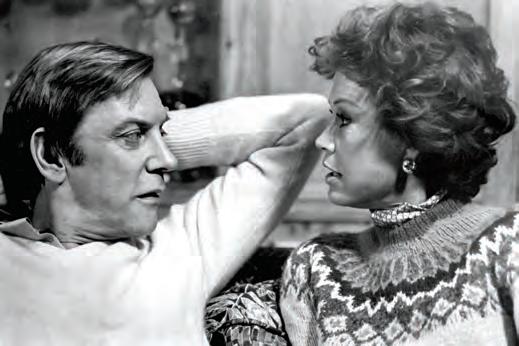
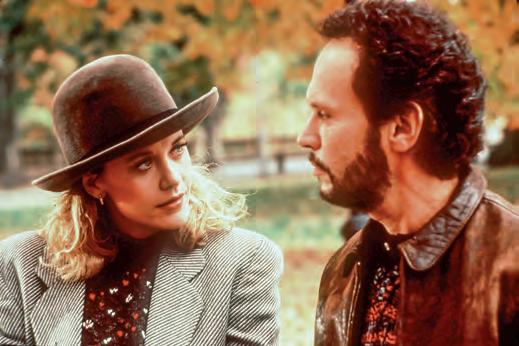
1
Jennifer Lopez in the dream sequence from “Selena.”
2
Thelma Ritter, Clark Gable, and Marilyn Monroe in “The Misfits.”
ning (!), Sigourney Weaver, Samuel L. Jackson, Amy Adams, Michelle Williams, Debra Winger, Mark Ruffalo, Miranda Richardson, Jennifer Jason Leigh, John Travolta, Naomi Watts, Laura Linney, Tom Cruise …
You read that right. One need only rewatch Cruise’s “Born on the Fourth of July,” “Magnolia” and even “Tropic Thunder” to know he has the acting chops and
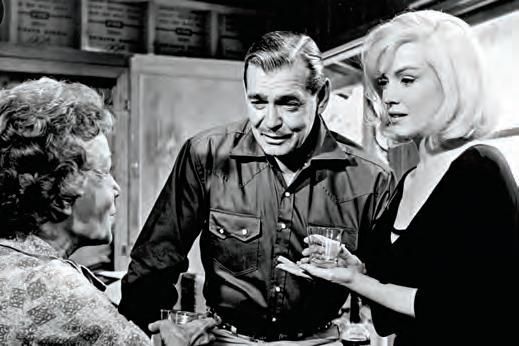

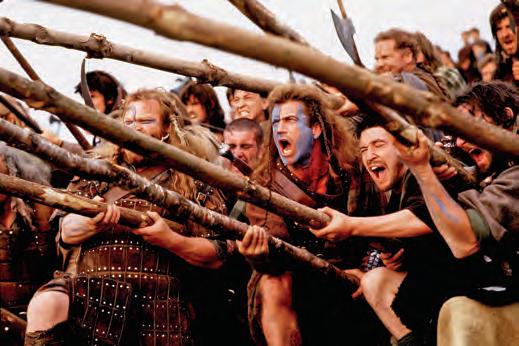
3
Donald Sutherland and Mary Tyler Moore in “Ordinary People.”
4
Haley Joel Osment, left, and Bruce Willis in “The Sixth Sense.”
deserves a walk to the podium (though in his case, it could be a highspeed run).
When Travolta got the first of his two nominations for “Saturday Night Fever,” his competition included Burton in “Equus,” on his seventh and final nomination. Both lost to Richard Dreyfuss in “The Goodbye Girl.” That same year, a littleknown actor drew critical notice for a small, raw performance in “Looking for Mr.
5
Meg Ryan and Billy Crystal in "When Harry Met Sally.”
6
Mel Gibson, center, in “Braveheart.”
Goodbar.” Richard Gere wasn’t nominated for that film, or for “Days of Heaven” or “An Officer and a Gentleman” or “Chicago” or anything that followed. So what can he and this season’s shutouts cull from all this?
Simple: The Oscars are a crapshoot. Sometimes you win, more often you lose and sometimes you don’t even get in the game.


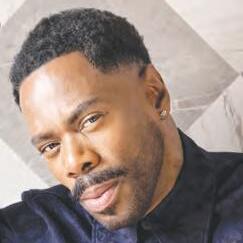




Story by Emily Zemler
Oscar winner Nathan Crowley took a practical approach to designing the musical’s magical world: ‘Why wouldn’t you do it for real if you could?’

ALTHOUGH “WICKED” exists in a fantastical world, Nathan Crowley wanted to make every set as real as possible.
The production designer, who was nominated for an Oscar in 2021 for “Tenet,” prefers a practical approach — an idea he took to an extreme when creating the magical world of Oz.
“I’m not interested in standing in front of a blue screen with a digital design,” Crowley says, speaking over Zoom from London’s Pinewood Studios, where he is prepping “Avengers: Doomsday.” “I want to make things. I knew doing it all practically was going to be a big, big task. But that being said, I wouldn’t have missed a minute of it.”

Crowley previously designed sets for “The Greatest Showman” and “Wonka,” although his background is more in action and scifi than musicals. But he says he enjoys the “worldbuilding fantasy” of the genre and likes the challenge of working with filmmakers to create sets that are optimized for choreography and large musical numbers. While Crowley watched the stage production of “Wicked” several times in preparation, he took more of his visual inspiration from the 1939 classic “The Wizard of Oz.”
“It’s two totally different formats,” Crowley says. “We are telling this alternative story to ‘The Wizard of Oz,’ and we have to be cinematic. I have to get the audience to fall into the world of Oz and not question it. The stage show is really about story, story, story, rather than design elements. I have to tell you that you’re in Oz, and you must never question it, and you must focus on Galinda and Elphaba and not the set. But you also have to allow the audience to be nostalgic, so I had to put in those memories from the stage show and ‘The Wizard of Oz.’”
Crowley and his team had five months to prep the film, which shot its two parts at the same time. All of the sets, many of which involved massive backlot builds, were constructed simultaneously using nearly 1,000 construction workers. There were separate backlots for Munchkinland, Shiz University and Emerald City, as well as numerous interior set builds on soundstages. As the film opens on Munchkinland, the camera follows perfect rows of colorful tulips. Those could have been inserted digitally, but instead Crowley enlisted Mark Eves, a farmer in Norfolk, England, to plant 9 million tulip bulbs.
“I planted 500 acres of corn for ‘Interstellar,’” Crowley says. “So I knew we could do it because I’ve done it before. And before VFX, that’s what you’d go and do. So why wouldn’t you do it for real if you could?”
Shiz University was the most complicated set, in part because it was built against a water tank that was deep enough to wade in. In the film, students and visitors arrive to the school by boat, evoking the canals of Venice. The look of the university is an amalgam of Italian, Moorish and American architectural styles, blending materials such as plaster, copper and wood.
“It’s a mixing of every culture,” Crowley says. “Architects would hate me. It’s com

2 3
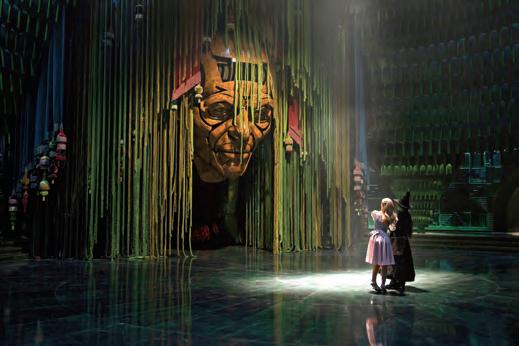
1
Millions of tulips were planted for Munchkinland scenes.
2
Nathan Crowley oversaw all the set designs on “Wicked.”
3
One puppeteer controlled the Wizard’s mechanical head.
forting, and it had to feel beautiful. The water did a lot of the work. It became very complex. By the time you hit the courtyard, which is up the stairs from the water entrance, you’re 12 or 13 feet up before you can start building the actual university. It ended up going 55 feet high with a windresistant structure.”
Inside Shiz, viewers get to glimpse the dorm rooms, several classrooms and a very whimsical library. It was important to Crowley that everything was as detailed as possible. The dorm room shared by Elphaba and Galinda has curved walls with romantic windows, and handpainted flowers adorn the woodwork and cabinets throughout the school.
The library set, used to introduce Fiyero in the song “Dancing Through Life,” exemplifies Crowley’s practical approach. The production designer collaborated with special effects supervisor Paul Corbould to design and construct three circular, motorized bookcases with internal ladders that could spin while actors danced inside.
“It was very tough to figure out a dance number with them,” Crowley says. “But for me, it was about the introduction of Fiyero. He has to be the coolest guy in town, so the fact that he gets the coolest automated set was important. It was actually one of the first sets we built, but we didn’t shoot it un
4
The sleek Emerald City Express train weighed in at 58 tons.
5 Galinda’s arrival by boat to Shiz University was inspired by Venice’s canals.
6 The library set had motorized bookcases that spun as actors danced in them.

til midschedule, so it was sitting there getting tested and getting worked on and getting practiced on for weeks.”
Another complicated set was Emerald City, an expansive backlot build that stood 52 feet high and used CGI extension to complete its sparkling grandeur. For Crowley, it was one of the most difficult to design, largely because filmgoing audiences are so familiar with its silhouette.
“You always see it from afar, and I wanted to bridge the line between the distance shot and then moving into it,” he
notes. “I wanted to finally connect the audience from the 1939 film, which had [the city] as a painted backdrop. It had to be the most incredible place you could ever go to. It’s like what the White City [World’s Fair] must have been in Chicago, this dream. Shiz is founded in our reality; Munchkinland is slightly less but it’s something you’re familiar with; but Emerald City had to be something new.”
Inside Emerald City, one of the most impressive details is the Wizard’s puppeteered mechanical head, which he uses to

speak to his subjects from behind the curtain. The team constructed a working head for the Wizard’s throne room that was entirely practical.
“I’m most proud of the Wizard and the Emerald City Express train,” Crowley says. “I loved being on set and seeing this giant head open and talk to you. All of the movement was done by one puppeteer, and there were hydraulics controlled by special effects because it had to be able to tilt. It was so much fun. [This film] was really about the joy of making stuff.”

The Spotlight Who’s Counting
Story by Carla Meyer ■
Illustration by Natalia Agatte For The Times
Ralph Fiennes has been a revered actor for decades yet has received comparatively scant academy recognition through the years. His lead actor nomination for his performance as a cardinal overseeing the selection of the next pope in “Conclave” is a big step in the right direction.

2
Fiennes earned two previous Oscar nominations: supporting, for his blandly evil commandant in “Schindler’s List” (1993), and lead, for the lovesick cartographer in “The English Patient” (1996).
7, 9
“Schindler’s” and “Patient” each won multiple Oscars, including best picture, but Fiennes lost to Tommy Lee Jones (“The Fugitive”) and Geoffrey Rush (“Shine”).
10+
Fiennes has received BAFTA, Screen Actors Guild, Emmy, Golden Globes and other nominations in the ...
21stcentury
But the gap between his “Patient” and “Conclave” Oscar noms lasted roughly ...
1
full Timothée Chalamet. Or ...
28 years
Even though Fiennes won rave reviews in “The Constant Gardener” (2005) and “The Grand Budapest Hotel” (2014). We have a theory ...
2005
... that academy voters took the whole “he who must not be named” thing from Fiennes’ first “Harry Potter” appearance too far, but ...
3
... maybe playing a man of the cloth offset that evil energy. Spencer Tracy, “Boys Town,” and Bing Crosby and Barry Fitzgerald, “Going My Way,” won playing priests.
2009
Did Philip Seymour Hoffman’s supporting nod as an enigmatic priest in “Doubt” lead the way for Fiennes’ questioning cardinal?
The Spotlight Gold Standard
With the focus on winning — even if it is an honor just to be nominated — it’s time to recalibrate those talking points and focus on the movie’s strengths
WHAT MOVIE WILL WIN THE OSCAR FOR BEST picture? The race, for the moment, is more of a freeforall than it has been in years. For the 10 movies nominated, being invited to the party was just the first step. Now the focus is on winning. Talking points need to be refreshed and recalibrated. Existential crises about the meaning of it all must be kicked to the curb. The Oscars’ biggest prize is there for the taking! ¶ What messages might these 10 movies be sending as we head into the final stretch? Let’s open the envelopes and take a look.

‘ANORA’
Over 230 Top 10 lists! We know what you’re thinking. There are 230 film critics still holding jobs? Yes, even if we had to stretch the definition to include members of the Critics Choice Assn. But the point is, people who love movies love this movie! Why wouldn’t they? It’s like three classic films in one — screwball comedy, homeinvasion thriller and a rueful drama of regret. Plus, there’s romance! And sex! And a soulful Russian dude. And Mikey Madison giving the best lead performance of the year. All seamlessly woven together by a true auteur, Sean Baker. It’s a f— miracle. (Excuse the language. But we’re all grownups, aren’t we?)
‘THE BRUTALIST’
Creating art is hard. It’s the destination, not the journey because, again, creating art is a pitiless process that will grind you down. That finance guy who wonders why your movie has to be 3 ½ hours long? Everything that is ugly, cruel and stupid — but mostly ugly — is his fault. Him and all the other dilettantes who don’t know the wonders of VistaVision. Rivers of frivolities may flow (ahem, “Emilia Pérez”), but this movie is designed to endure the cultural erosion inflicted by such trivialities. We hope you have found this conversation persuasive and intellectually stimulating.
‘A COMPLETE UNKNOWN’
[Sung to the tune of “Like a Rolling Stone”]
Once upon a time, you voted so fine
Gave Oscars to guys like Spielberg in his prime, didn’t you?
Now people vote “Everything Everywhere All at Once”
You thought they were kidding you
You used to brag about
All the classic movies critics would tout
Now you don’t talk so loud
Now you don’t seem so proud
About having to stream your next film
How does it feel? How does it feel?
To be out on your own
Voting for ‘A Complete Unknown’ ‘CONCLAVE’
You like us. You really, really like us. OK, maybe that’s overstating things a bit. You like us well enough. More importantly, you don’t hate us. Maybe we’re not your favorite film. But how about putting us No. 2 on your preferential ballot? As you know from watching our entertaining, enjoyable movie, you never know how an election might go.
‘DUNE: PART TWO’
We’re trying to be magnanimous here and express our appreciation for this best picture nomination and the four others you gave us. Thank you! But seriously ... what the hell? We won six Oscars for the first movie, and this one’s even better. Did you forget that it came out this year? Are your brains that riddled with age and decay? Sorry. That was a little out of line. Anyway, again, thank you. We’re not expecting much ... now. But when the third movie comes out next year (and it will be arriving in December, so you won’t have that “It came out too early” excuse), you better make it up to us. Snub Denis Villeneuve again and we’re spiking your popcorn with psychedelic dust.
‘EMILIA PÉREZ’
You don’t go on Reddit, do you? Good. What about Letterboxd? No? Glad to hear. In fact, you might just want to stay off the internet until after the Oscars. There’s a lot of misinformation out there. Just dwell on the fact that “Emilia Pérez” received 13 Os

car nominations, more than any other movie, and was recognized by writers, directors, actors, musicians ... we could go on, but you get the picture. People who know about the craft of cinema have consistently rewarded this movie’s brilliance and audacity. Remember that. Oh, and don’t go on TikTok, either. That place is a cesspool too.
‘I’M STILL HERE’
Look, we’re as surprised as anyone that we’re here. Thanks, again! We know it’s a bit of stretch to think we’ll win best picture, but please remember that we also earned nominations for lead actress (Golden Globe winner Fernanda Torres!) and international feature, where we’re up against that other movie that the internet (and Mexico) hates. We’re viable options in those categories — principled alternatives, if you will.
‘NICKEL BOYS’
The best movie of the year? Don’t take our word for it. That august body of cineastes, the National Society of Film Critics, said so, and, frankly, it wasn’t even close. But back to the Oscars. It’s an honor to be nominated and all, but we’re thinking there’s room to grow, as we suspect some of you haven’t quite gotten around to seeing the movie yet. Maybe you’ve read the book and consider it a masterpiece. The movie is too, in a wholly original way.
‘THE SUBSTANCE’
Was that you leaving the theater with about 20 minutes to go in the film? No judgment. Even we realize that ending was a bit much, though purely by design. You see, it’s hard out there for women of a certain age. But you know that. Or you know somebody who knows that. Our lead, Demi Moore, definitely understands. Did you hear her speech at the Golden Globes after she won? What a night! Wouldn’t it be nice to keep the celebration going?
‘WICKED’
Why not vote for the musical that you saw in a movie theater (perhaps more than once), the one that has songs that are, you know, actually good? ↑ The best picture contenders are: top row, “Conclave,” “Anora,” “Wicked”; second row, “A Complete Unknown,” “Emilia Pérez,” “The Brutalist”; third row, “The Substance,” “Nickel Boys,” “Dune: Part Two”; bottom row, “I'm Still Here.”
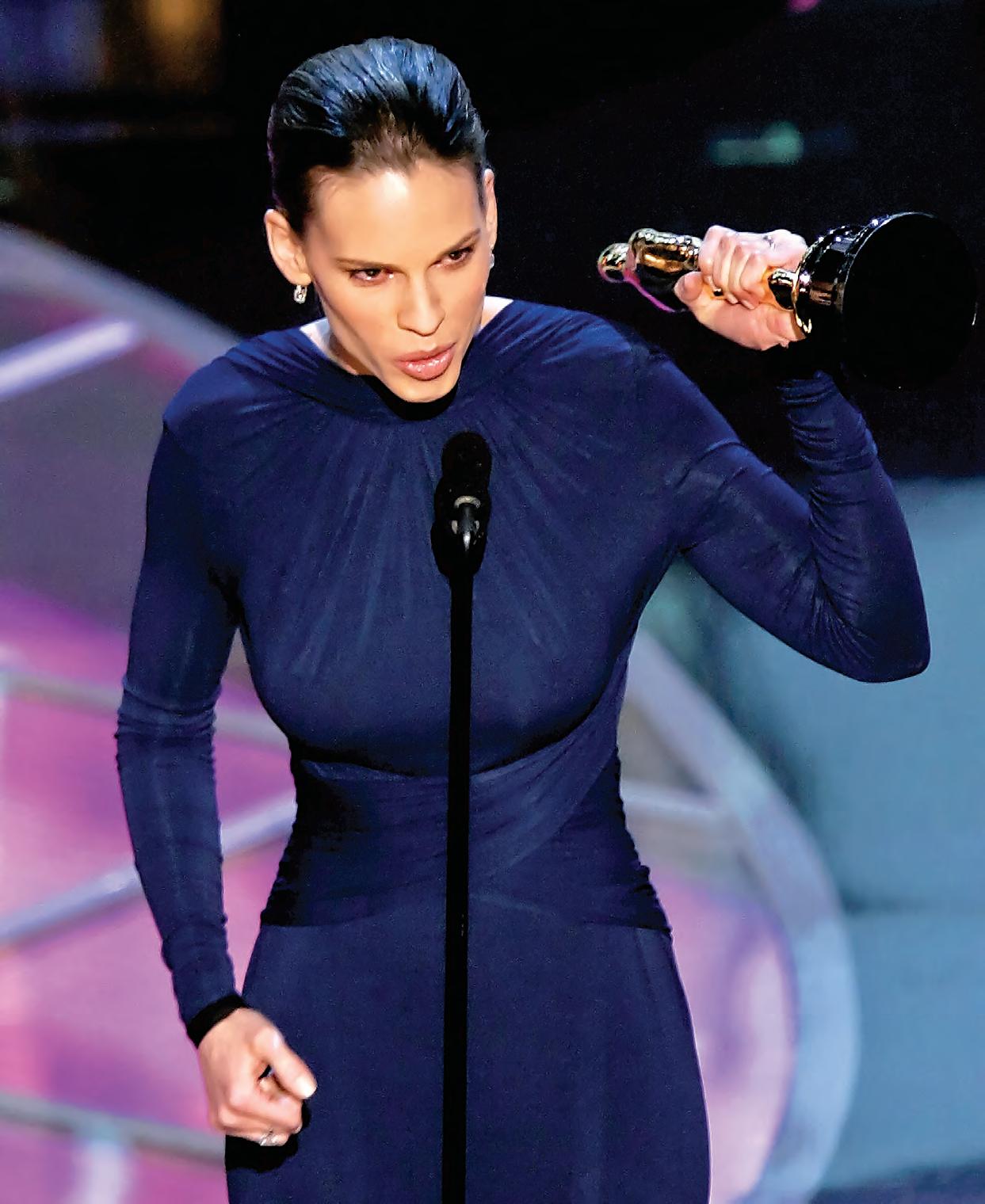
EVEN WHEN AN OSCAR MOMENT IS MEANT TO FOCUS ON THE BEST ACTRESSES IN THE BUSINESS... it often becomes about the actors. ¶ Early in the opening monologue for the 77th Academy Awards, held at the Kodak Theatre in Hollywood on Feb. 27, 2005, host Chris Rock struck a chord with at least a few actors in the audience. He compared Tom Cruise with Jude Law and then asked, “Who is Jude Law? Why is he in every movie I have seen in the last four years? … He’s in everything.” ¶ It was a callout that much later in the show Sean Penn, who was onstage to read out the nominees for lead actress, decided to address. Going offscript, Penn said, “Forgive my compromised sense of humor, but I did want to answer [Rock’s] question about who Jude Law is. He’s one of our finest actors.” Only then did he pivot to focus on the women: “What Jude and all talented actors know is that for every greatly talented actor, there are five actresses who are nothing short of magic. And the Academy’s favorite five this year are…” ¶ After that segue, it was time for a small bit of history to be made, when Hilary Swank earned her second Oscar.
REVISITING KEY OSCAR MOMENTS FROM TWO DECADES AGO
CATEGORY: Lead Actress
By winning that award, Swank became the first woman in academy history to win for playing a boxer, in “Million Dollar Baby.” (She’d already become the first nominated.) After giving husband Chad Lowe a hug inthe audience (they would divorce two years later), Swank took the stage to accept the award. It was her second win on her second nomination; she’d won her first Oscar in 2000 for “Boys Don’t Cry.”
“I don’t know what I did in this life to deserve all this,” she said in her Nebraska twang. “I’m just a girl from a trailer park who had a dream.”
She gave Lowe thanks, calling him “my everything,” and made sure to thank the cast and crew from “Million,” which had already earned costar Morgan Freeman an Oscar for his role in the film and would shortly thereafter earn directorproducer Clint Eastwood two more Oscars (for directing and best picture). Swank also thanked her mother “for believing in me from the beginning; my dad for support,” then saved special thoughts for Eastwood, calling him her “mo chuisle,” an Irish phrase meaning “pulse of my heart” that was used in the film.
Surely, Annette Bening, who also was nominated in the category for playing an actor in “Being Julia,” was having déjà vu. She and Swank had been opposite one another on the lead actress nominee list in 2000. At that time, Bening was up for “American Beauty,” and Swank won it then too, for “Boys Don’t Cry.” Bening has been nominated five times for an Oscar (1991, 2000, 2005, 2011, 2024) with no wins; all of them were leading nominations except one in the supporting category.
“I would think it would feel really great [to win], but I certainly know what it’s like not to win,” she told Rolling Stone ahead of the 2024 Oscars ceremony, when she was up for “Nyad.” “I’ve been there and I’ve done that, and that’s also not so bad.”
Also up for the award were firsttime nominee Catalina Sandino Moreno, who played a drug mule in “Maria Full of Grace”; fellow firsttimer Imelda Staunton, who played the title character, an abortion provider, in “Vera Drake”; and Kate Winslet, for playing a woman who’s had her memories erased in “Eternal Sunshine of the Spotless Mind.” Winslet is a seventime nominee (1996, 1998, 2002, 2005, 2007, 2009 and 2016), which includes her one win in the category in 2009 for “The Reader.” Winslet missed a nomination this year for her biopic “Lee,” based on American photographer Lee Miller.
The Spotlight 20 Years Back
Story by Randee Dawn
← Hilary Swank took home the lead actress Oscar in 2005 for her turn as a boxer in “Million Dollar Baby.”

THE WIDE SHOT: Specializing in indie films pays for Focus Features
p 40
The Industry The Wide Shot
How Focus Features tapped into audiences beyond the art house with such recent crowd-pleasing films as ‘Conclave’ and ‘Nosferatu’

Ryan Faughnder Senior Editor
IT’S NOT EASY TO BE IN THE SPECIALTY FILM business these days. But Focus Features, the prestigeminded unit of Comcast’s Universal Filmed Entertainment Group, has been enjoying a strong run lately.
Its politicking papal succession drama “Conclave,” starring Ralph Fiennes and directed by Edward Berger, has grossed $69 million in global ticket sales, including $31.5 million domestically (Focus acquired the U.S. rights in 2023). The movie got seven Oscar nominations, including best picture as well as lead actor Fiennes, supporting actress Isabella Rossellini and adapted screenplay. “Nosferatu,” a gothic vampire picture from Robert Eggers, has collected $136 million in worldwide receipts since its Christmas Day debut and received four Oscar nominations.
Not bad, particularly at a time when the box office is dominated by action franchises and kids movies, and when theatrical windows are much shorter than they were before the COVID19 pandemic, especially for smaller films like the adultoriented dramas, comedies and festivalpicks that Focus pursues.
At the Sundance Film Festival, the company debuted “The Ballad of Wallis Island,” starring Carey Mulligan. Other upcoming releases include Steven Soderbergh’s “Black Bag” and “Downton Abbey 3.”
I recently caught up with Peter Kujawski, who has served as chairman of Focus since 2016, to discuss the state of the indie film business and other hot topics in the sector. This interview, which took place before the release of “Nosferatu,” has been edited for length and clarity.
You’ve said that the specialty film business was potentially poised for another golden age, which is a counterintuitive take. Why?
It’s more broad than just what I think is a positive moment for specialty film but also for film in general.
If you look at the landscape right now, in terms of what audiences seem to be coming to theaters for, and taking ownership of and amplifying through their own lives, more and more you’re seeing that they are the bold swings, the ones that feel like they are coming from unique, visionary points of view.
It’s great for audiences and the film business as a whole in terms of building a future for new filmmakers and new voices. And for the specialty sector, it’s great because that’s what we’ve been doing all along.
When you say fans and audiences are taking ownership of films, what do you mean? Are we talking about Let
terboxd? Social media?
That’s certainly a big part of it. I think Letterboxd specifically has been a great thing for films and for audiences.
A film like “Conclave,” by traditional metrics several years ago, would have been considered squarely a classical piece of prestige filmmaking for an older audience. And that’s a big part of its success.
But also a big part of it has been younger audiences showing up and amplifying it through a take on social media, whether it’s the “Mean Girls” memes or using the shot of the cardinal taking the hit off the vape pen. The fact that audiences are connecting to that aspect and the joyousness, entertainment value and humor of that movie is kind of new for a film like that.
You also see it happening with “Nosferatu” — people owning that by responding to the sarcophagi that we’ve got in movie theaters and being like, “In December, my whole personality is going to be ‘Nosferatu.’ ” For hyper intellectualpropertybased films, that has been happening for a while. But certainly for a film like “Nosferatu,” there’s just a fresh energy.
Some of that stuff you can lean into and facilitate through marketing, right?
“Facilitate” is a good word for it, because you definitely can’t create that energy. You can try all you want to create it, but all you can do is provide the tools for that energy to harness.
It’s not unheard of to release a big horror movie on Christmas, but it’s still perhaps unexpected. What was the thinking behind that decision?
You’re right that it’s not unheard of. Maybe most famously: Dec. 26, 1973, “The Exorcist” comes out. There’s no better example. And I actually think that’s not a coincidence.

When we announced the date, there was a lot of discussion online about, “It should be Halloween. What are you guys thinking?” Trust me, I love going to the movies and watching a certain kind of horror film in October. But also, there’s a reason that every major culture and religion in the world has a festival of lights of some
→ Willem Dafoe stars in Robert Eggers’ remake of “Nosferatu,” a hit for indie distributor Focus Features. F
sort around the winter solstice. That’s because, deep in the DNA of who we are, we’re most afraid when it’s most dark.
That’s actually what Rob [Eggers] is doing with this film. He’s not creating panic with jump scares and things like that. The movie delivers those. But what Rob is so good at is fear. That real languishing sense of dread over a whole movie.
Are older moviegoers coming back to theaters? That’s the sweet spot for a movie like “Conclave.”
There’s no doubt that that particular segment of the audience has been the slowest in coming back. But for sure, “Conclave” has a core older audience that really came out for that movie. And I think that’s a stepping stone. We are one of the companies providing films for this audience and doing it with regular cadence. And I think it’s even more important that the regular cadence remain there so that the habit of moviegoing can continue.
I want to give a shoutout to a movie that we weren’t involved in that did a brilliant job of it. Look at the audience for “Thelma.” It’s not obvious that that film would do the box office that it did [$12.5 million worldwide], but I think it did because the movie was brilliant, funny and heartfelt and also gave something to an audience that is largely underserved.
You’re under the Universal film umbrella, which means your titles are released in theaters first and then come out on premium video ondemand just a few weeks later. Is that strategy working?
We have seen it do a couple things right from the getgo. One, it really does work. It absolutely drives quite significant incremental revenue to the movie. Trust me, no one has been more vocal internally about advocating for the stresstesting of the idea. We’ve looked at it over and over again and literally have reams of backup data showing that the audiences engaging with the film on PVOD are not cannibalizing the audiences that engage theatrically.
Do you feel like you’ve come up with the right mix of movies? How do you
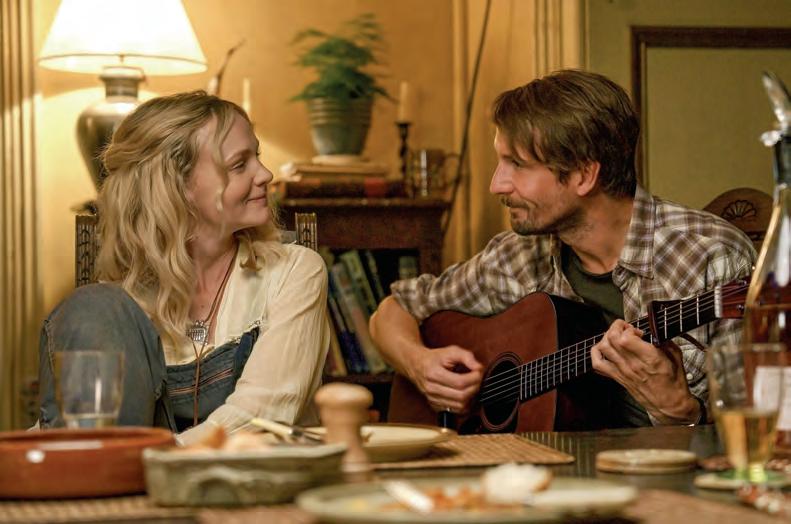

think about building out your slate?
We try to be smart about the balance in terms of the size of our swings. But the ethos behind all of them is really the same. We want every movie we make to be unmistakably unique and impossible to conceive of as a work by any other filmmaker. On that level, I think we’re absolutely hitting that mark.
You’ve done thoughtprovoking political movies, like “On the Basis of Sex” and “BlacKkKlansman.” Right now, studios seem nervous to touchhotbutton political issues in filmmaking. Do
↑ Carey Mulligan and Tom Basden star in James Griffiths' “The Ballad of Wallis Island,” premiering at Sundance.
Director Steven Soderbergh’s “Black Bag,” starring Michael Fassbender, is upcoming from Focus Features.
you see that chilling effect happening? It’s sort of the story of the day. If something comes across our desk that we love and are responding to, of course we would jump to do that again, and I believe we would be given all the support we’ve always been given.
You want to be smart and careful that you are telling the story for the right reasons, and that you’re telling the story in a way that is still grounded in an authentic human experience. Rather than trying to create a film that is built to be a piece of politics, which, historically, if you go too far in that direction, can often backfire.
Story by Diane Garrett
Running almost as long as ‘Gone With the Wind,’ ‘The Brutalist’ lags at the box office. But ‘Wicked’ and ‘Dune: Part Two’ have done big business. Is less more?
IF“THEBRUTALIST”WINSTHECOVETEDBESTPICTURE
Oscar, it will be one of the longest films to ever do so, although its boxoffice take is lagging considerably behind many previous recipients. “Gone With the Wind,” which runs nearly four hours with intermission, is the longest winner and has grossed $402.4 million worldwide since its 1939 release, according to BoxOfficeMojo. ¶ By comparison, “The Brutalist” spans three hours and 35 minutes with a 15minute intermission and had mustered $11.7 million worldwide in limited release as of Jan. 31; that tally is expected to


2022 “AVATAR: THE WAY OF WATER” 3 HOURS, 12 MINUTES
1997 “TITANIC” 3 HOURS, 14 MINUTES
2017 “STAR WARS: EPISODE VIII — THE LAST JEDI” 2 HOURS, 32 MINUTES
2003 “THE LORD OF THE RINGS: THE RETURN OF THE KING” 3 HOURS, 21 MINUTES
2011 “TRANSFORMERS: DARK OF THE MOON” 2 HOURS, 34 MINUTES





KEY
■ Worldwide gross
■ Adjusted for inflation
Grosses from Boxofficemojo.com. Figures adjusted for inflation using U.S. Bureau of Labor Statistics CPI Inflation Calculator.
2012 “THE DARK KNIGHT RISES” 2 HOURS, 44 MINUTES
2014 “TRANSFORMERS: AGE OF EXTINCTION” 2 HOURS, 45 MINUTES
2006 “PIRATES OF THE CARIBBEAN: DEAD MAN’S CHEST” 2 HOURS, 31 MINUTES



climb now that the filmhas received 10 Academy Award nominations. ¶ It is not the only supersized movie vying for the top trophy: “Wicked” and “Dune: Part Two” both exceed the 2½hour mark, and while each has rung up more than $710 million in global ticket sales, neither ranks among the Top 10 grossing films with that lengthy running time or beyond. ¶ Even last season’s “Oppenheimer,” which had a run time of three hours, fails to make the cut with a worldwide gross of $975.6 million. But weep not for Christopher Nolan: He won two Oscars for his film, including the best picture statuette.
$2B
Performers
February 4, 2025
In Edward Berger’s suspenseful “Conclave,” a spirited monologue from newcomer Cardinal Benitez (Carlos Diehz) speaks of the pettiness among the clergymen gathered to select the next pontiff. “These things are not the church,” he says of their quarrels. “The church is not a tradition. The church is not the past. The church is what we do next.” The fiery message urges solidarity among the distracted conclave of cardinals, and in the ensuing scene they walk as one toward the Sistine Chapel through the rain holding white umbrellas. Berger suggests the angelic visual, framed from high above, is a metaphor for the cardinals to “find purity, the reason why they started in the first place with this job.” The allegorical imagery partly found its allure from costume designer Lisy Christl. Typically one imagines black when thinking of an umbrella, Berger says. “And she showed me this white one and I thought, ‘That’s genius.’” But even with the reinvigorated faith among the Church of the Cardinals, the portrait subliminally hints at the emotional undertone of the protagonist, Berger says. “You may notice there’s one guy without an umbrella. He’s broken. He doesn’t get one.”

LOS ANGELES TIMES (ISSN 04583035) is published by the Los Angeles Times, 2300 E. Imperial Highway, El Segundo, CA 90245. Periodicals postage is paid at Los Angeles, CA, and additional cities. POSTMASTER: Send address changes to this address. | Home Delivery Subscription Rates (all rates include applicable CA sales taxes and apply to most areas) | Print + unlimited digital rates: Sevenday $28/week, $1,456 annually. Thursday–Sunday $16/week, $832 annually. Thursday & Sunday $10/week, $520 annually. Saturday & Sunday $9/week, $468 annually. Sunday $8.50/week, $442 annually. Monday–Saturday $18/week, $936 annually (also includes Sundays, except 2/16, 3/30, 8/31, and 10/12). Monday–Friday $16/week, $832 annually. | Pricing for all subscriptions includes the Thanksgiving 11/27/25 issue. | Subscriptions with a Thurs. delivery include 19 special issues of The Envelope with 2 issues in Jan., 3 in Feb., 4 in June, 3 in Aug., 2 in Nov. and 5 in Dec.


Stay onestepahead of thefast-changing business of entertainment. Everyweekin TheWideShotnewsletter, L.A. Timesreporters break down topstories andtrendsfromthe heartofthe industry —and what it allmeans forthe future.
Sign up FREE.Scanthe code or visitlatimes.com/wideshot

Unlock access to exclusivebenefits and coverage when youjoinThe Envelope Insiders,our VIPclubfor awards voters. Free membershipincludes:


• TheEnvelopemagazinedigital edition viaemail
• Guaranteed access to TheEnvelopeLive screeningeventsand panels
• Specialinsider coverage andupdates throughout awards season
• Opportunitytoreceive TheEnvelope magazine printedition (available only to AMPASand TVAmembers)
Join nowfor free.Scanthe code or visitlatimes.com/envelope1
